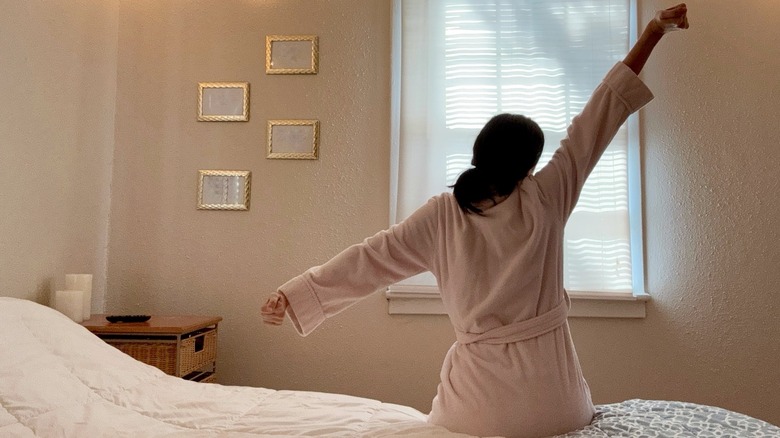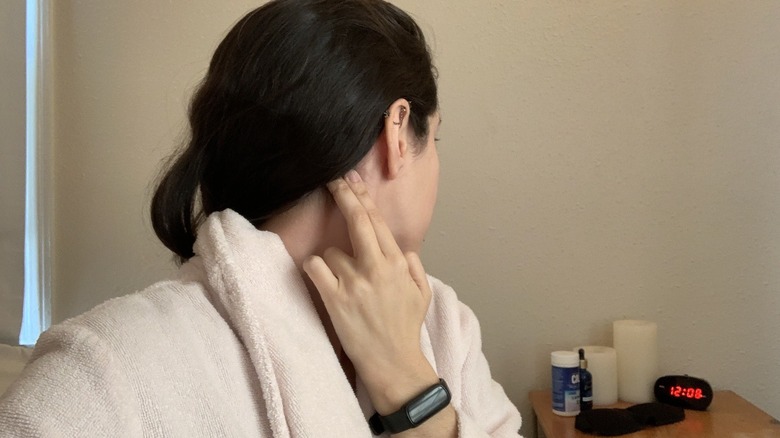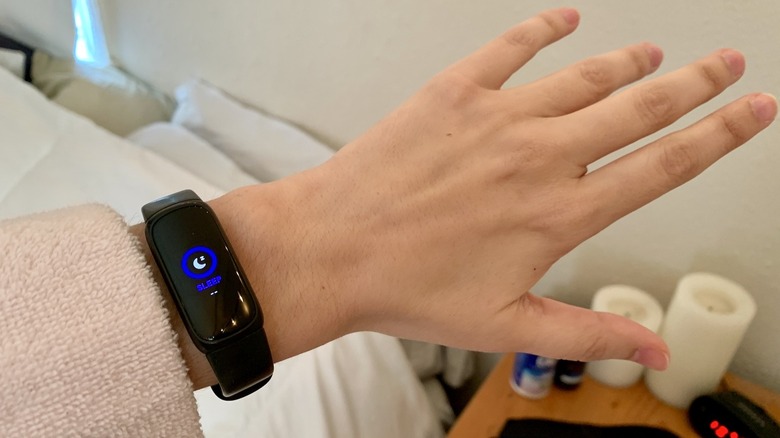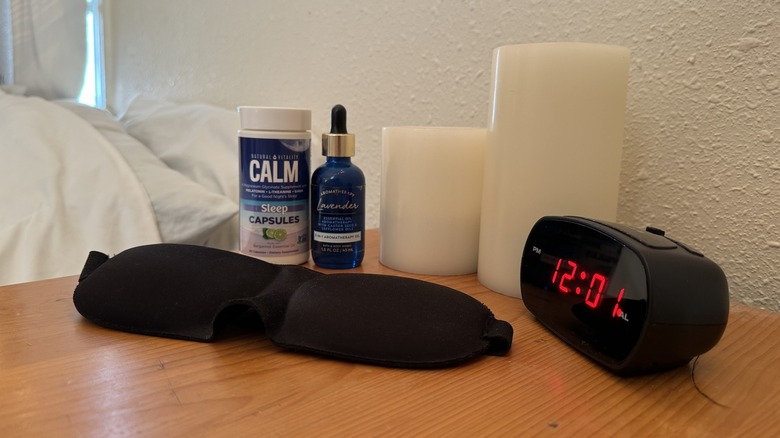We Tried TikTok's Easy Ear Trick To Fall Asleep Fast. Here's What Happened
We face plenty of challenges throughout our day, but falling asleep can be the toughest of them all. In a 2022 report released by the National Center for Health Statistics, researchers looked at 2020 survey data to get a better understanding of adult sleep habits. Over 14% of adults reported difficulty falling asleep throughout the majority of the last 30 days. Most of us are running around with jam-packed schedules and don't have a minute to spare when it comes to sleep. That's why I took it upon myself to give TikTok's easy ear trick a try and see if it really helped me hit the hay any faster.
Posted to the platform in 2021, the clip features Dr. Josh Hanson, Doctor of Acupuncture and Chinese Medicine (DACM), showing viewers how to find a specific spot behind the ear that may hold the key to a faster snooze time. The spot is called "animian," although some variation in the spelling has been noted, including "anmian" and "An Mian." The spot can be found by placing your index finger at the base of the earlobe and sliding it back until you reach a small notch just on the other side of the bony ridge known as the skull's mastoid bone (per Cleveland Clinic). Rub the area in a circular motion anywhere between 100 and 200 times, and before you know it, you're off to dreamland — or so they say. Time to put this #sleephack to the test.
How we tracked our sleep data
In the video, Dr. Hanson explains that by applying pressure to the animian region, it helps put our nervous system at ease so we can drift off to sleep more quickly. For my experiment, however, I didn't want to rely solely on perceived feelings of relaxation to draw my conclusions. Rather, I wanted to crunch the numbers! To do so, I implemented the sleep hack over the course of seven nights. After completing the exercise each night, I took note of what time it was. In the morning, I checked my sleep tracking data using a Fitbit Inspire 3 smartwatch that I'd worn overnight and calculated how much time had passed between when I finished the ear trick and when the watch told me I had fallen asleep.
I didn't stop there, though. Because the hack involves rubbing the area anywhere between 100 to 200 times, I wanted to see exactly how many circular motions might be most effective. To achieve this, I tried out 100 circular motions over the first couple of nights, then 150, and then 200 as the week came to an end. As if that wasn't enough, I also alternated between the left and right ear, as well as clockwise and counterclockwise motions. As you can see, we take our TikTok hacks very seriously here at Health Digest.
How 100 to 150 circular ear motions affected our sleep
For the first night, I started with 100 clockwise motions behind the left ear. The exercise was completed at 10:15 p.m. Upon waking, the smartwatch showed that I had fallen asleep at 10:33 p.m. — a sleep latency time of 18 minutes. Not too shabby when you consider the fact that the Sleep Foundation reports 10 to 20 minutes to be a healthy sleep latency time. However, three wake-ups were noted during the course of the night between 12:45 a.m. and 1:50 a.m. Truth be told, I might've gone a little overboard on the applied pressure, as the area definitely felt a bit sore the next morning.
Thankfully, the second night went a little smoother. Performing 100 clockwise motions behind the right ear this time, my sleep latency time clocked in at just 7 minutes with zero soreness and zero wake-ups to report the next morning. I increased the number of rotations to 150 the following two nights. The first night I applied pressure in a clockwise direction behind the left ear and a counterclockwise direction behind the right ear the next night. This resulted in a sleep latency time of 11 minutes and 12 minutes respectively. Interestingly, I noted that the first night I fell directly into deep sleep while the next night I fell right into the light sleep stage.
The effects of 200 circular ear motions on our sleep
From there on out, I kicked it into high gear with 200 circular ear motions each night. The first night I applied pressure in a clockwise direction behind the right ear. I finished the exercise at 11:01 p.m. and fell into deep sleep at 11:18 p.m. with no wake-ups experienced that night (a sleep latency time of 17 minutes). The next night I did the opposite, trying out 200 circular motions in a counterclockwise direction behind the left ear. This resulted in the longest sleep latency time I had experienced yet at an exhausting 29 minutes — yikes!
I mixed things up for the final night of the experiment by alternating between a clockwise and counterclockwise direction for a total of 200 circular motions behind the left ear. This proved to be the roughest night of them all. The exercise was completed at 9:08 p.m. with a reported sleep latency time of 33 minutes. My smartwatch further showed that this was closely followed by two wake-ups; the first lasting 8 minutes between 9:48 p.m. and 9:56 p.m. and the second wake-up lasting for 15 minutes between 10:41 p.m. to 10:57 p.m. So, the moment of truth: What was my ultimate verdict?
How our bedtime habits may have influenced the ear sleep hack
Based on the data, I was surprised to find that I had more success with fewer rotations. Implementing 100 to 150 circular motions had me falling asleep much faster than on nights when I tried out 200 motions. However, it's fair to say that there were a number of outside factors that likely played into these results. Some nights, for example, an evening workout followed by a hot shower may have helped me relax before bed. Oppositely, nights when traffic was particularly noisy or one night in which I partook in a glass of wine before bed may explain why it took me longer to drift off.
That being said, it looks like activating the animian region may be worth a try — but don't just take my word for it. The hack is based on the practice of acupressure therapy, which works by releasing energy blockages in the body. Research published in 2017 in the Journal of Traditional and Complementary Medicine showed that acupressure therapy has been linked with reductions in sleep disturbances, improvements in sleep quality, and insomnia symptom relief. While more research is needed on the subject, it's possible that a connection between acupressure and sleep may very well exist.




